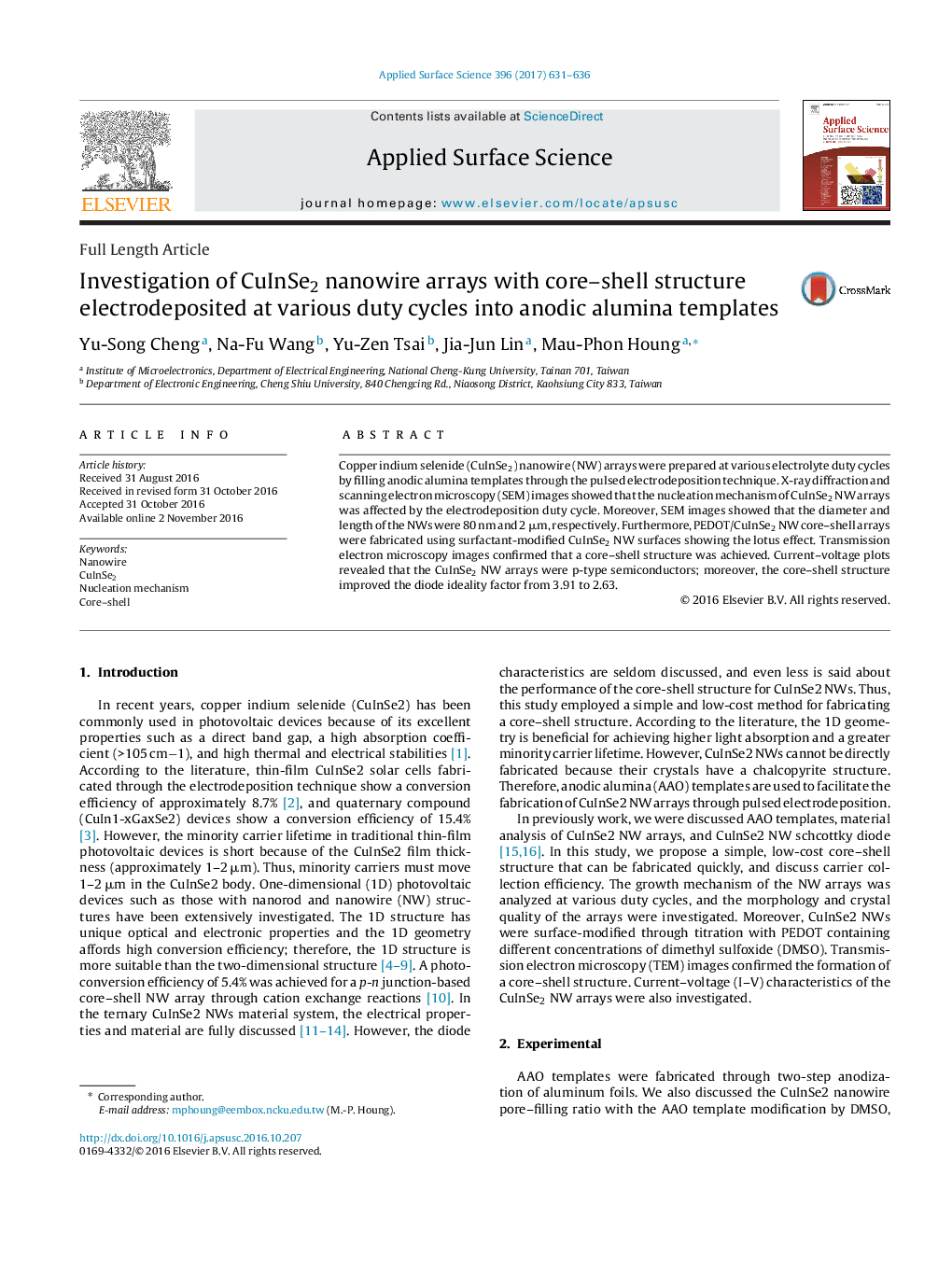| Article ID | Journal | Published Year | Pages | File Type |
|---|---|---|---|---|
| 5352748 | Applied Surface Science | 2017 | 6 Pages |
Abstract
Copper indium selenide (CuInSe2) nanowire (NW) arrays were prepared at various electrolyte duty cycles by filling anodic alumina templates through the pulsed electrodeposition technique. X-ray diffraction and scanning electron microscopy (SEM) images showed that the nucleation mechanism of CuInSe2 NW arrays was affected by the electrodeposition duty cycle. Moreover, SEM images showed that the diameter and length of the NWs were 80 nm and 2 μm, respectively. Furthermore, PEDOT/CuInSe2 NW core-shell arrays were fabricated using surfactant-modified CuInSe2 NW surfaces showing the lotus effect. Transmission electron microscopy images confirmed that a core-shell structure was achieved. Current-voltage plots revealed that the CuInSe2 NW arrays were p-type semiconductors; moreover, the core-shell structure improved the diode ideality factor from 3.91 to 2.63.
Related Topics
Physical Sciences and Engineering
Chemistry
Physical and Theoretical Chemistry
Authors
Yu-Song Cheng, Na-Fu Wang, Yu-Zen Tsai, Jia-Jun Lin, Mau-Phon Houng,
